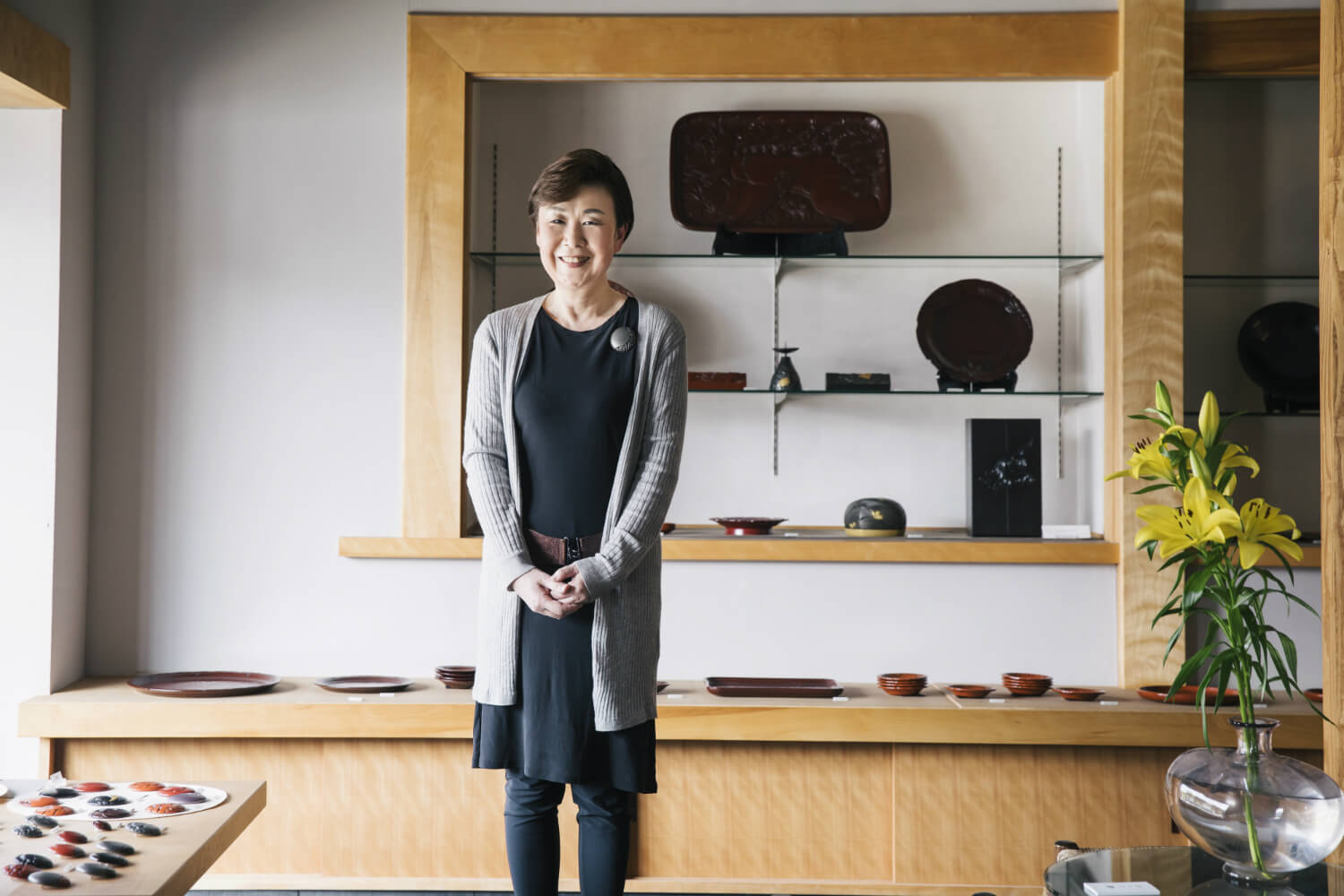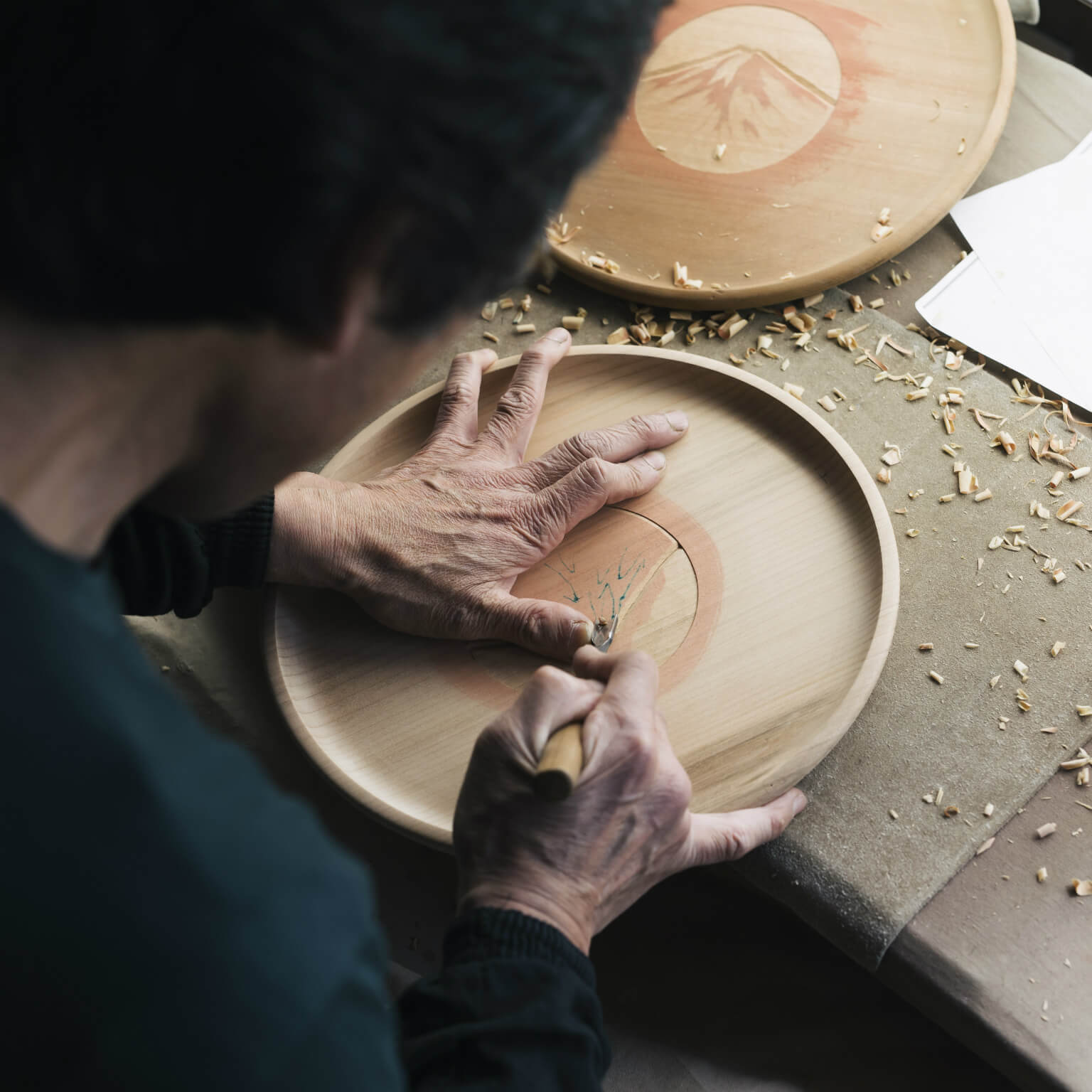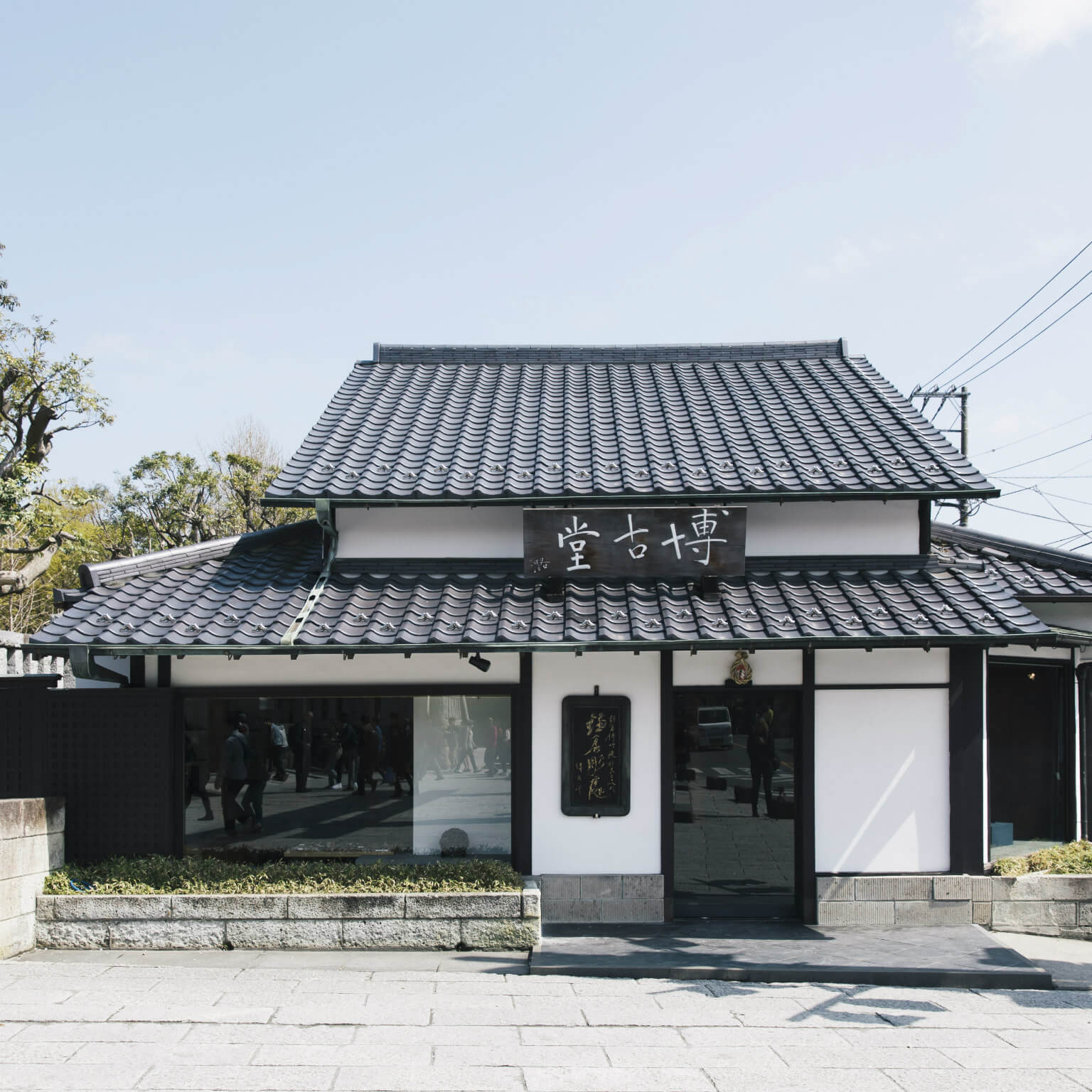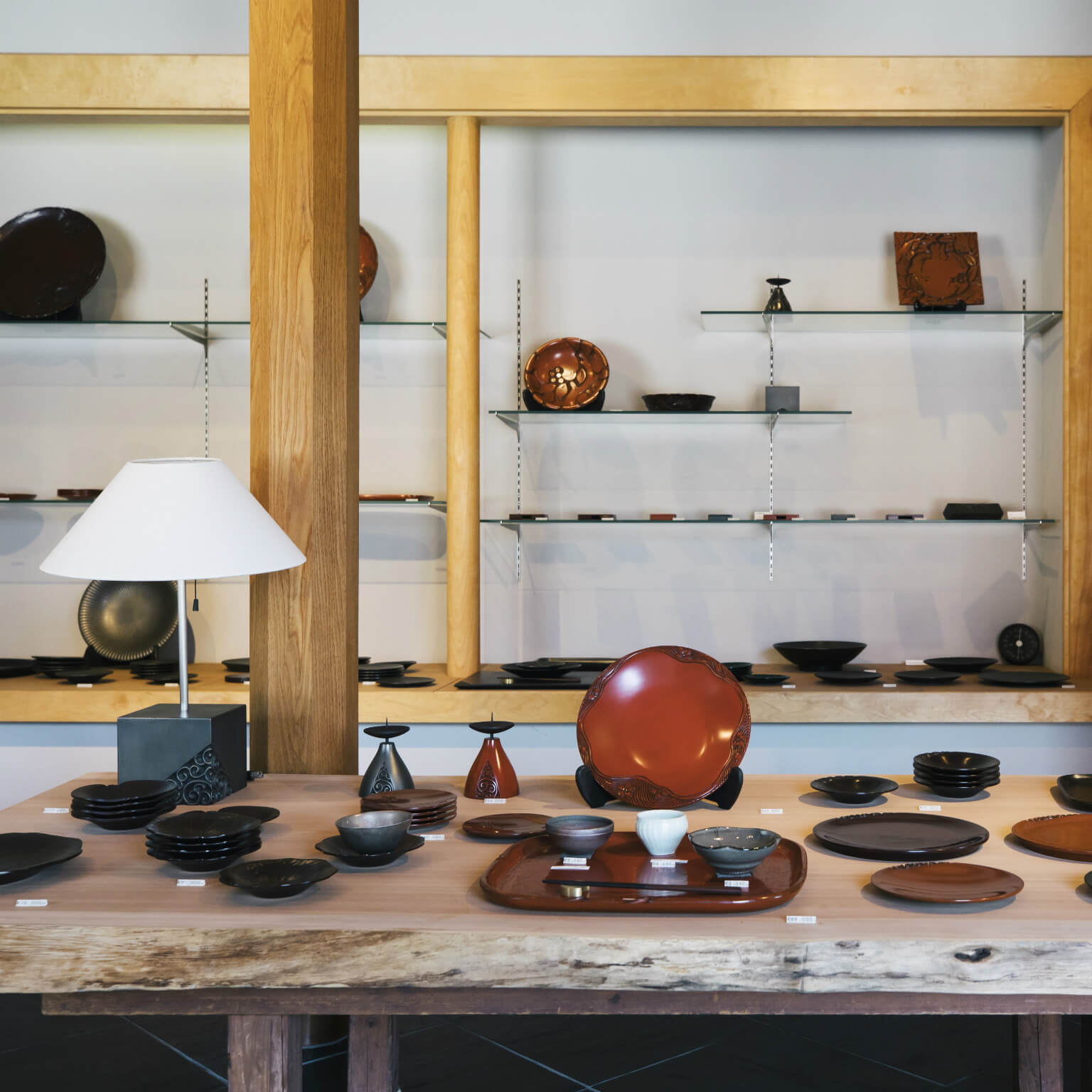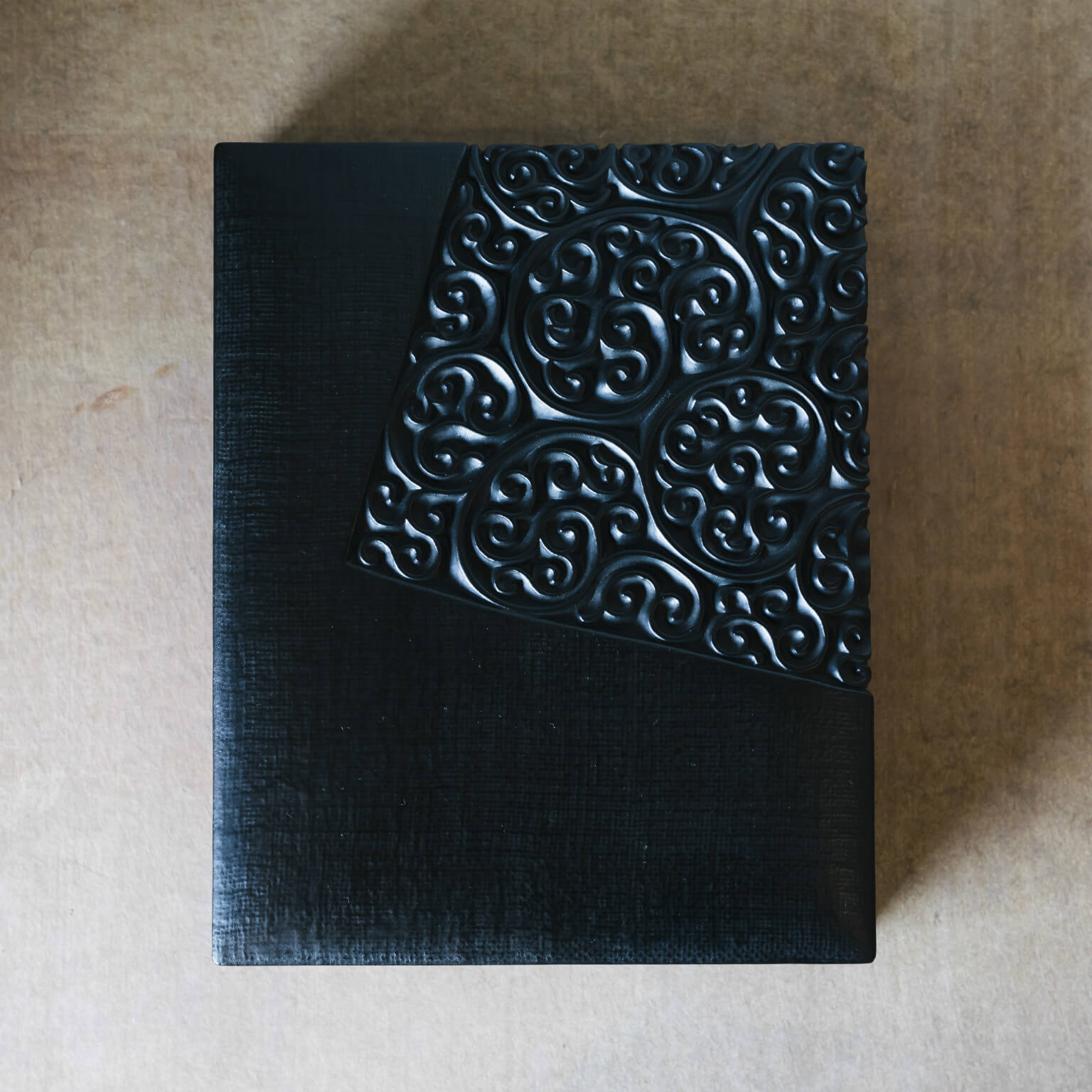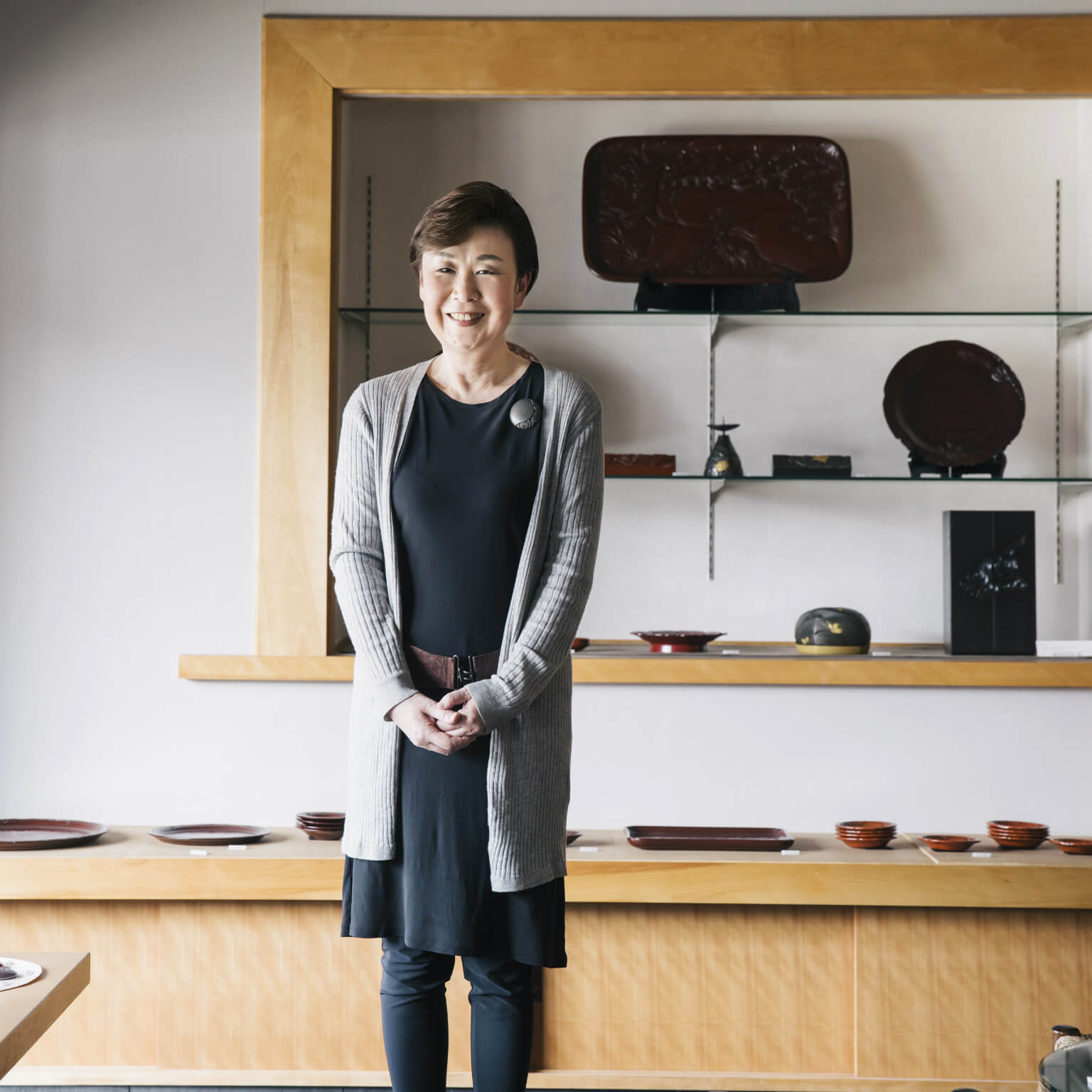“I wanted to make tableware that I myself wanted to use at home.”
Keiko Goto
Creative director
Hakkodo
With a dignified and somewhat restrained demeanour, Keiko Goto can at first appear a little aloof. But get her talking about the fine Kamakurabori lacquerware in her shop and she quickly warms up. Goto is the proprietress of Hakkodo, a more than 700-year-old family business that sits at the corner of the entrance to Kamakura’s magnificent Tsurugaoka Hachimangu Shrine. She is 29th in line from the founder and has been acting as the CEO and creative director of the company for over a decade.
“I grew up playing in the workshop, and as I was the oldest child in the family, it was natural that I take over after my father,” she says. After graduating from Tokyo University of the Arts with a speciality in lacquer, Goto worked for the nearby Kamakurabori Museum before taking the helm of the family business.
The history of Kamakurabori dates back to 1192, when the Kamakura Shogunate was established in the city and craftsmen moved in to supply Buddhist sculptures and other carvings for the many temples and shrines being constructed around the then-capital of Japan. When the market for sculptures was saturated, the artisans began making more mundane items such as bowls, plates and trays. Today, more than 50 workshops continue the tradition of making the beautiful lacquerware.
The actual production process hasn’t changed much over the centuries. Hard, rough-cut katsura wood is shaped into bowls, plates and trays, then carved by hand with razor-sharp chisels to create different patterns. Up to ten layers of lacquer from the urushi tree are then applied over a period of several weeks, allowing for each layer to properly dry in between. The result is a deep, beautiful sheen that is one of the characteristics of the craft. At Hakkodo, this work is done by a small team of artisans in a workshop attached to the back of the shop.
As one of the oldest Kamakurabori workshops in the city, Goto is aware of the importance of tradition, but also feels that the craft must evolve to be relevant for a more contemporary audience.
“About half of our products are traditional patterns and items passed down through the generations, but the other half are new products that I have designed to fit better with a more modern lifestyle,” she says. The shop itself is housed in a 200-year-old building with a beautifully renovated interior that tastefully marries the old and the new.
Goto has even launched a line of simple tableware she calls Hakko. The carvings on the plates, cups and bowls are far less ornamental than the more traditional pieces, and the lacquering process has also been simplified to about half that of the traditional Kamakurabori ware. The simple but beautifully crafted items make the perfect accent to any interior.
“I wanted to make tableware that I myself wanted to use at home,” Goto explains.
TIPS & RESERVATION INFO
Hakkodo is ideally located at the entrance to Tsurugaoka Hachimangu Shrine, which is well worth a visit when in Kamakura. The shop is open from 9:30am to 6pm from March through October, and 9:30am to 5:30pm between November and February. Those interested in learning more about Kamakurabori and its history may want to stop in at the Kamakurabori Kaikan, just a short walk down Wakamiya Oji Street towards the station. In addition to a small gallery and museum, it also houses a cafe where visitors can get a cup of tea and traditional Japanese sweets served on beautiful pieces of lacquerware.
ACCESS DETAILS
2-1-28 Yukinoshita, KamakuraDIRECTIONS
Hakkodo
鎌倉市雪ノ下2-1-28
電話: 0467-22-2429

